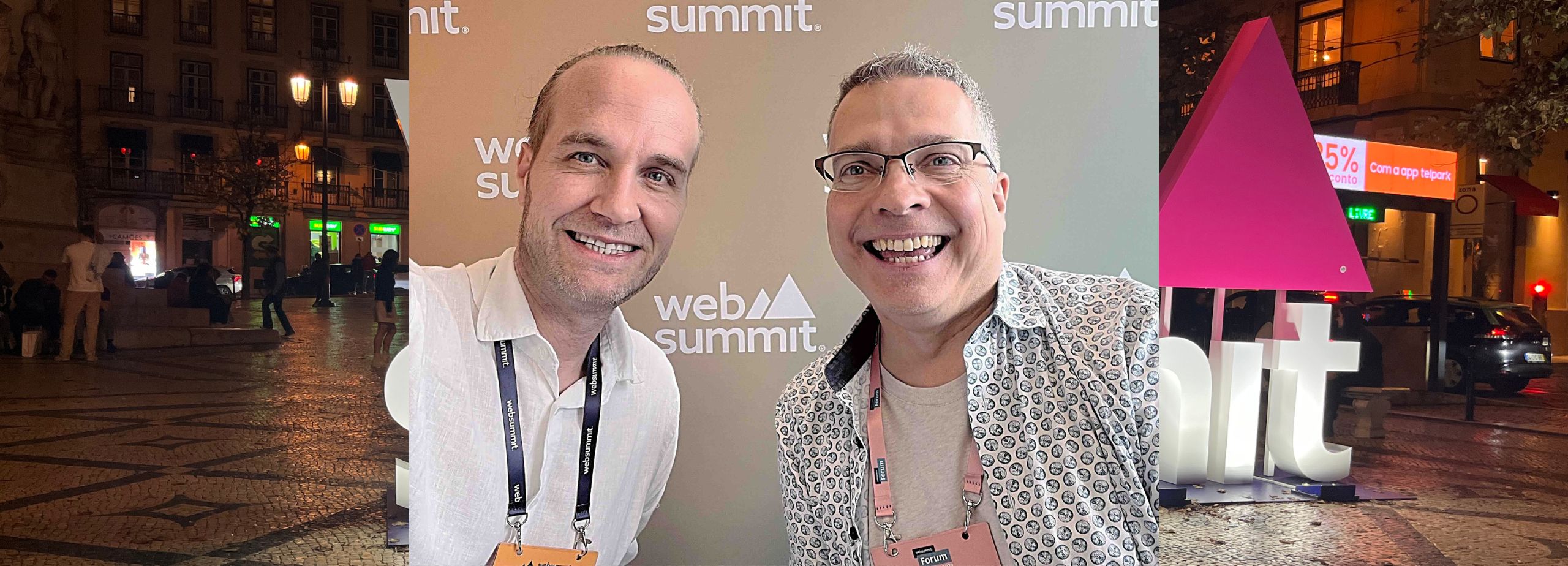Ever wonder how emerging technologies are transforming the marketing landscape? Get set to unravel this mystery with Francesca Tabor, conference organizer and head of marketing at Fashion AI.
As we traverse the changing terrain of marketing, we delve into the world of Metaverses, games, NFTs, and AI. We discuss the revolution wrought by open-source technologies, making AI accessible to the masses, and how generative AI is emerging as the new frontier in content creation.
The conversation takes a fascinating turn as we confront the power and ethical implications of conversive AI, exploring how digital avatars and non-player characters engage with this technology. Listen to the risks and rewards associated with targeting young, tech-savvy audiences and gain insights into the concept of "brandom" in relation to NFTs, games, and social media. We wrap up with a stimulating discussion on the potential of 3D printing in fashion, its potential to drive sustainability, and whether AI's fashion takeover threatens established brands. Don't miss out on this riveting journey through the future of marketing and fashion!
Unraveling the Future of Marketing: Big Data, AI and the Metaverse
Ever wondered how technology is reshaping marketing? Or how big data and artificial intelligence (AI) are transforming industries like fashion?
This article delves into these intriguing topics, exploring everything from the evolution of marketing due to advancements in technology and big data, to the emergence of digital avatars. It also discusses how AI intersects with various sectors such as fashion and the metaverse - a collective virtual shared space created by converging physical and virtual reality.
The impact of these technological developments on user experience, product recommendations, privacy concerns, creativity in design processes among others cannot be overstated. They present both challenges such as navigating legal landscapes around generative AI or dealing with biases in AI models; but also exciting opportunities for brands to engage creators through competitions or promote sustainability using 3D printing.
All your burning questions about this fascinating intersection between technology and marketing will be answered in detail throughout this comprehensive exploration.

Franki Tabor on the Web3 CMO Stories podcast
The Evolution of Marketing and the Role of Big Data
In recent years, the marketing landscape has undergone significant changes, driven by advancements in technology and the availability of big data. The rise of platforms like Facebook and social media apps has led to the collection of vast amounts of information on users. This wealth of data has had a profound impact on user experience and product recommendations.
Initially, the collection of big data allowed users to create detailed profiles and connect with others who shared similar interests and passions. Companies like Netflix and Amazon were able to leverage this data to provide personalized recommendations to users based on their preferences and behavior. For example, if a user enjoyed watching romantic comedies, they would be shown similar movies in their recommended list.
However, the dynamic changed with the emergence of privacy concerns and abuses on platforms like Facebook, such as the Cambridge Analytica scandal. Users became more cautious about sharing their personal information, leading to a shift in data sharing behavior. This change presented a challenge for marketers who relied on user data to understand their target audience.
To address this challenge, the concept of digital avatars emerged as a way to understand user preferences and identities without relying on traditional data collection methods. In this context, a digital avatar serves as a representation of an individual's identity in the digital realm. It allows users to express themselves through their interests in music, sports, fashion, and other cultural aspects.
For example, if someone identifies as a jazz music enthusiast who enjoys golf and prefers Ralph Lauren clothing, their digital avatar can reflect these preferences. On the other hand, someone who identifies with skateboarding and hip hop culture would have a different type of avatar. These avatars play a crucial role in communicating one's identity within online communities.
The Intersection of AI, Fashion, and the Metaverse
As technology continues to advance, the intersection of artificial intelligence (AI), fashion, and the Metaverse presents exciting opportunities for marketers. One area of focus is generative AI, which involves using AI models to create synthetic content such as images, videos, and text. In the context of fashion, generative AI can be used to generate fashion images that cater to specific styles and trends.
For instance, companies like Refabric utilize generative AI to create fashion images by training AI models on a dataset of fashion images. This allows them to generate unique and visually appealing designs that align with current fashion trends. By leveraging generative AI in fashion, marketers can tap into a vast array of creative possibilities and produce content that resonates with their target audience.
Furthermore, the integration of multimodal use cases in the fashion industry opens up new avenues for immersive experiences. In a Metaverse-style scenario, marketers can create virtual spaces that simulate real-world fashion events like pop-up stores or fashion shows. These virtual experiences can be enhanced by incorporating various elements such as product collections, characters, and avatars.
For example, imagine attending a virtual fashion event where you can explore an underwater pop-up store or interact with virtual models walking the catwalk. These experiences blend storytelling, filmmaking, games, and the Metaverse to create engaging and interactive environments for users. The possibilities are endless, ranging from fantastical settings like underwater worlds to futuristic landscapes on Mars.
While these virtual experiences offer exciting opportunities for brands and marketers, it is important to note that mass adoption may still be a few years away. However, regions like the Middle East are already investing heavily in infrastructure that supports these immersive experiences. Retail stores with LED walls showcasing virtual worlds created in Unreal Engine are just one example of how the integration of the physical and virtual realms is taking shape.

Francesca Tabor on the Web3 CMO Stories podcast
The Challenges and Ethical Considerations of AI and the Metaverse
While the integration of AI, fashion, and the Metaverse presents exciting opportunities, it also comes with its fair share of challenges and ethical considerations. One of the key challenges is navigating the legal and regulatory landscape surrounding generative AI. As generative AI creates synthetic content that is not copyrightable, issues related to intellectual property (IP), attribution, and royalties arise.
For instance, if a company like Disney were to use generative AI to create a new character, they would not automatically own the copyright for that character. This poses a significant challenge for brands and creatives who want to monetize their creations in the Metaverse. To address this issue, there is a need for technologists and lawyers to collaborate and develop new frameworks that recognize generative IP as a distinct form of intellectual property.
Another important consideration in the adoption of AI and the Metaverse is trust. The Metaverse is still a relatively new concept for many people, and there have been instances of scams and fraudulent activities within virtual environments. Building trust among users is crucial for the widespread adoption of these technologies.
Additionally, digital identity plays a significant role in establishing trust within the Metaverse. With avatars representing individuals in virtual spaces, it becomes essential to ensure that users can verify their identities and establish authentic connections. Blockchain technology can potentially play a role in providing secure and verifiable digital identities in the Metaverse.
Furthermore, ethical implications arise with the use of conversational AI. Conversational AI allows for more empathetic interactions between humans and machines, creating a sense of understanding and connection. However, there is a need to establish ethical guidelines to prevent misuse or manipulation of conversational AI technologies.
Ultimately, as these technologies continue to evolve and shape the future of marketing, it is crucial for the people behind these innovations to prioritize ethics and consider the impact on individuals and society. Startups and brands should ensure that their teams share similar values and are genuinely committed to creating positive experiences for users. By doing so, they can build trust, foster innovation, and drive the responsible adoption of AI and the Metaverse.
The Role of Brands in the AI-Driven Fashion Industry
In the AI-driven fashion industry, brands play a crucial role in shaping the future of fashion and influencing the adoption of generative AI technologies. However, there are both potential challenges and opportunities for brands in this space.
The potential backlash from brands against AI-generated designs
One potential challenge that brands may face is the backlash against AI-generated designs. Some brands may be hesitant to embrace generative AI as they fear that it could devalue their brand image or dilute their creative control. For example, they may worry that AI-generated designs lack the uniqueness and artistic vision that human designers bring to the table.
However, it is important for brands to recognize that generative AI can be a powerful tool for creativity and innovation. By leveraging AI algorithms, brands can explore new design possibilities and push the boundaries of traditional fashion. It is not about replacing human designers but rather augmenting their creative process with AI technology.
The opportunity for brands to engage with creators through AI design competitions
On the other hand, there is a significant opportunity for brands to engage with creators through AI design competitions. Brands can leverage generative AI to challenge creators to come up with innovative and sustainable fashion lines using their brand as a prompt. This approach not only fosters collaboration between brands and creators but also encourages the exploration of new ideas and perspectives.
For example, a brand like Nike could host an AI design competition where creators are invited to develop a sustainable fashion line using Nike as a text prompt. The brand can then judge the competition and award the winner, or involve the community in voting for the best design. The prize could range from cash rewards and press recognition to turning the winning design into a physical capsule collection or even digital fashion.
The potential for AI-generated designs to become physical collections or digital fashion
Another exciting opportunity for brands in the AI-driven fashion industry is the potential for AI-generated designs to become physical collections or digital fashion. With generative AI, brands can create unique and innovative designs that may not have been possible through traditional design processes.
For instance, a brand could use generative AI algorithms to create a 3D model of a shoe design based on a text prompt. This 3D model can then be sent to a 3D printer, allowing the brand to produce the design as a physical product. Alternatively, the AI-generated design can be transformed into digital fashion, which exists solely in virtual spaces like the Metaverse.
The emergence of AI fashion magazines and the impact on traditional fashion media
AI is also making its mark on traditional fashion media with the emergence of AI fashion magazines. These magazines feature AI-generated models wearing clothes that do not actually exist in the physical world. This fusion of technology and fashion challenges traditional notions of beauty and representation.
For example, Copy, a company that specializes in AI-generated content, has created the first AI fashion magazine. The magazine showcases models and garments that are entirely generated by AI algorithms. This innovation has the potential to disrupt traditional fashion media and redefine beauty standards.
Overall, brands have a unique opportunity to shape the future of the AI-driven fashion industry. By embracing generative AI technologies, brands can engage with creators, explore new design possibilities, and challenge traditional notions of fashion. The integration of AI into the fashion industry opens up exciting avenues for creativity and innovation.

Franki Tabor on the Web3 CMO Stories podcast
The Intersection of Generative AI with Various Industries
Generative AI is not limited to the fashion industry alone. It has the potential to revolutionize various industries and reshape the way we approach creativity, problem-solving, and innovation. Let's explore how generative AI intersects with different sectors.
1. The application of generative AI in creative industries
Generative AI has already made significant strides in creative industries such as art, architecture, fashion, film, and gaming. In these fields, AI algorithms are being used to generate unique and innovative designs, visuals, and experiences.
For example, in the art world, artists are leveraging generative AI to create stunning and thought-provoking artworks. They can input certain parameters or prompts into the AI system, which then generates a piece of art based on those inputs. This allows artists to explore new artistic possibilities and push the boundaries of traditional art forms.
In architecture, generative AI is being used to design buildings and structures that are not only aesthetically pleasing but also functional and sustainable. By inputting specific requirements such as space constraints, energy efficiency goals, and material preferences, architects can use generative AI algorithms to generate multiple design options that meet these criteria.
In the film industry, generative AI is being utilized to create realistic visual effects and animations. By training AI models on vast amounts of data, filmmakers can generate lifelike characters, environments, and special effects that enhance the overall cinematic experience.
Gaming is another industry where generative AI is making a significant impact. Game developers are using AI algorithms to generate dynamic and immersive game worlds, non-player characters (NPCs) with realistic behaviors, and adaptive gameplay experiences that respond to player actions.
2. The potential impact of generative AI on HR, supply chain, and manufacturing
Generative AI also has the potential to transform industries beyond the creative realm. It can revolutionize processes in HR, supply chain management, and manufacturing.
In HR, generative AI can assist in tasks such as resume screening, candidate matching, and employee training. AI algorithms can analyze large volumes of data to identify patterns and make predictions about job fit and performance. This can streamline the hiring process and help companies find the right talent more efficiently.
In supply chain management, generative AI can optimize inventory management, demand forecasting, and logistics planning. By analyzing historical data and external factors such as market trends and customer preferences, AI algorithms can generate insights that enable companies to make informed decisions and improve operational efficiency.
In manufacturing, generative AI can enhance product design and production processes. By leveraging AI algorithms, manufacturers can generate optimized designs that meet specific requirements such as cost-effectiveness, durability, and sustainability. Additionally, AI-powered robots and automation systems can improve production efficiency and quality control.
3. The role of generative AI in understanding human intelligence and consciousness
As we train AI models and develop generative AI systems, we are also gaining insights into human intelligence and consciousness. The process of teaching machines to think and create like humans allows us to better understand our own cognitive processes.
For example, researchers are using generative AI to study language processing and natural language understanding. By training AI models on vast amounts of text data, they can uncover patterns in human language usage and gain insights into how our brains process language.
Furthermore, generative AI systems have shed light on the limitations of conversational AI. They have highlighted issues such as lying and hallucinating in AI-generated responses, which mirror the flaws in human communication. These findings prompt us to reflect on the biases and shortcomings of human intelligence and how they manifest in AI systems.
4. The challenges of biases in AI and the reflection of societal biases
One of the significant challenges in generative AI is the presence of biases in AI models and the reflection of societal biases in AI-generated outputs. AI algorithms learn from data, and if the training data contains biases, the AI system may perpetuate those biases in its outputs.
For example, if an AI model is trained on a dataset that predominantly features images of certain racial or ethnic groups, it may struggle to accurately generate diverse representations. This can lead to biased or stereotypical outputs that reinforce existing societal prejudices.
To address this challenge, researchers and developers are working on developing more diverse and inclusive training datasets and implementing bias mitigation techniques. By ensuring that AI models are trained on representative and unbiased data, we can reduce the impact of biases in generative AI systems.
In conclusion, generative AI has far-reaching implications across various industries. It is transforming creative industries, revolutionizing HR, supply chain management, and manufacturing processes, providing insights into human intelligence and consciousness, and highlighting the challenges of biases in AI. As we continue to explore the potential of generative AI, it is crucial to address these challenges and leverage its power responsibly for the benefit of society.
The Role of AI in Promoting Sustainability and Inclusivity in Fashion
Generative AI has the potential to not only revolutionize the creative aspects of the fashion industry but also address important issues such as sustainability and inclusivity. Let's explore how AI can play a role in promoting these values within the fashion world.
1. The potential for AI to challenge beauty standards and promote inclusivity in fashion
The fashion industry has long favored a certain beauty type, often excluding individuals who do not fit into these narrow standards. However, generative AI has the power to challenge these beauty norms and promote inclusivity by creating fashion that caters to diverse groups.
For example, micro communities have emerged within the fashion space that specifically focuses on creating AI-generated fashion for underrepresented groups. These communities aim to provide representation for individuals who have been traditionally overlooked by mainstream fashion brands.
While these efforts are commendable, it is important to ensure that the AI-generated images truly reflect the diversity of these communities. Currently, there are still biases present in some of these creations, such as using blonde, blue-eyed models even when designing for specific cultural or ethnic groups. To overcome this, separate background images can be created and then combined with the AI-generated fashion designs through photo editing techniques.
2. The emergence of micro communities creating AI-generated fashion for specific groups
Micro communities within the fashion industry are utilizing generative AI to create fashion lines that cater specifically to certain groups. For example, there are communities focused on designing fashion for Middle Eastern women who wear hijabs. These communities aim to provide fashionable options that align with cultural and religious practices.
However, it is crucial to ensure that these AI-generated designs accurately represent the intended group. Biases can still be present, such as depicting Middle Eastern women in stereotypical desert settings. By addressing these biases and creating more diverse and representative AI-generated fashion, we can promote inclusivity and empower individuals to see themselves reflected in the fashion world.
3. The potential for 3D printing and recycled materials in sustainable fashion
Sustainability is a pressing issue in the fashion industry, and generative AI has the potential to contribute to more sustainable practices. One area where this is evident is in the emergence of 3D printing technology.
3D printing allows for the creation of three-dimensional objects using digital models. In the context of fashion, this means that designers can use generative AI algorithms to create 3D models of clothing and accessories. These models can then be printed using sustainable materials, such as recycled plastics or textiles.
This approach not only reduces waste but also enables designers to create customized and unique pieces that align with individual preferences and measurements. By leveraging generative AI and 3D printing, fashion brands can move towards a more sustainable future where clothing is produced on-demand, reducing overproduction and minimizing environmental impact.
4. The role of AI in repurposing waste for fashion production
Another way that generative AI can contribute to sustainability in fashion is through the repurposing of waste materials. By using computer vision technology, AI algorithms can identify which types of waste materials, such as plastic or textile waste, can be melted down and transformed into new fashion items.
This process involves analyzing the properties of different waste materials and determining their suitability for repurposing. Once identified, these materials can be used in conjunction with 3D printing technology to create new garments or accessories.
This approach not only reduces the amount of waste that ends up in landfills but also provides an opportunity to create unique and innovative fashion pieces. By repurposing waste materials, fashion brands can contribute to a circular economy where resources are reused and waste is minimized.
In conclusion, generative AI has the potential to promote sustainability and inclusivity within the fashion industry. By challenging beauty standards, creating fashion for underrepresented groups, leveraging 3D printing technology, and repurposing waste materials, AI can drive positive change in the way fashion is produced and consumed. It is essential for fashion brands to embrace these opportunities and use generative AI responsibly to create a more sustainable and inclusive future.
Wrapping Up
As we conclude our exploration of the intersection between AI, big data and various industries, it's clear that these technologies are reshaping traditional practices and opening up new possibilities.
The use of generative AI in creative fields like fashion is pushing boundaries by challenging beauty standards and promoting inclusivity. It also offers a sustainable approach to production through 3D printing technology and repurposing waste materials.
In other sectors such as HR, supply chain management, manufacturing processes, generative AI is revolutionizing operations by optimizing efficiency and providing valuable insights into human intelligence and consciousness.
However, challenges persist with biases present in AI models reflecting societal prejudices. Addressing this issue requires developing more diverse training datasets and implementing bias mitigation techniques.
Will the integration of these technologies continue to evolve ethically while maintaining user trust? Only time will tell. Until then, let's keep exploring!

Franki Tabor on the Web3 CMO Stories podcast
KEY HIGHLIGHTS
[00:42] As a conference organizer and Head of Marketing at Fashion AI, can you provide some background about yourself?
[02:16] How do you envision the evolving marketing landscape?
[05:04] Can you share your insights on Generative AI, given your specialization, and explain how AI is influencing the fashion industry?
[07:26] What are your thoughts on AR, VR, and the Metaverse, especially considering fashion's prominence within this emerging digital space?
[12:54] Considering the trust issues and potential scams in the Metaverse, along with the need for secure digital identity, how do you see the future opportunities in this space once these challenges are addressed?
[17:45] I know you mentioned or you have an ID what we call Brandom or what you call Brandom. Could you please clarify or provide more context for what you mean by "Brandom"?
[21:09] What is the thing that you're most excited about in everything that you're doing right now?
[22:41] Do you see AI and Web 3 playing a role in promoting women's empowerment, sustainability, and the causes you support?
NOTABLE QUOTES
"There is like a utility or a membership or an access behind those NFTs. Then it makes sense like a ticket for a fashion event or like a digital twin or something like that." - Joeri Billast
"Brands might react to this in two different ways. They might be uber-protective and they try and sue the creator or have a takedown request to take that down... Or, they might go after the platforms like Mid Journey and they say we do not want your platform to use Tiffany or Nike as a text prompt." - Francesca Tabor
"I'm just in love with the space as a whole. I just find it fascinating. But fashion for me is special because I've been in the tech world for a long time and I've always been the majority as a woman in the space..." - Francesca Tabor
"Sustainability is a very interesting one, and I think what we will see in the future... is the emergence of 3d printing, which works very well for architecture, but it will also be fantastic for fashion." - Francesca Tabor
"Wow, we touched a lot of subjects actually in this episode today, Francesca. But, yeah, you have a lot of things going on, and if people want to know more about fashion, AI, about the conference that you are organizing, or they just want to connect with you, where would you like to send them?" - Joeri Billast
MENTIONED RESOURCES
Fashion AI: https://fashionai.pro/
Fashion AI Discord: https://discord.com/invite/NUpg7jNAHU
Generative AI Conference "Gen AI Con": https://generativeaiconference.org/
CONNECT
LinkedIn: https://www.linkedin.com/in/francescatabor/






